January 5 War Council at Trump International May Have Had More Attendees Than Previously Known
The list of those with some foreknowledge of the events of January 6 is growing.
The significance of a Trumpist “war council” being convened in Trump’s “private residence” in DC less than 24 hours before an armed insurrection against the U.S. government is tripartite. The key concerns, in increasing degree of seriousness, are:
News about the council may reveal that certain members of Trump’s inner circle anticipated that the events of January 6 would become violent;
news about the council may reveal that certain members of Trump’s inner circle enabled or even incited the events of January 6 becoming violent; and/or
news about the council may reveal that certain members of Trump’s inner circle coordinated the events of January 6.
One reason that Proof has written so extensively about the nearly twenty people who attended Trump’s war council is that they are not created equal. Some attendees might fall into the first category above, some the second, and some the third; other attendees might fall into multiple categories. It’s for this reason that Proof has so many articles on the event and its participants: see, e.g., articles 1, 2, 3, 4, 5, and 6.
A “war council” is defined as “a meeting between important people to discuss what to do in an emergency or difficult situation.” I call the January 5 meeting a war council because the phrase captures the two things all of its attendees had in common: (1) they were “important people” in some sense, with their prior importance being elevated by their invitation to attend such a select gathering in the private residence of the President of the United States hours before a historic day for America; (2) they all agreed, prior to the meeting and during it and after, privately and publicly, that the U.S. was, on January 5, in an “emergency or difficult situation.” While many reading this, including this author, may perceive the “emergency or difficult situation” differently from the January 5 war council attendees, even Trump’s critics would agree that by January 5 the nation was on high alert due to real—not imagined—threats.
A review of the full roster of war council members reveals just how different they are.
There is some evidence that meeting attendee Daniel Beck, for instance, may have anticipated violence on January 6, perhaps because of what he had heard on January 5, and that for this reason (in this respect only, similar to other parties at the meeting) he decided to avoid a march to the Capitol that he had otherwise previously supported, endorsed, and intended to join. That Beck had this anticipation is bolstered by his subsequent social media posts, which both endorse speakers who support violent insurrection and treat as “excellent intelligence” at least one speaker who claims more acts of domestic terrorism against the U.S. government are coming. However, there is no evidence Beck enabled or incited acts of sedition, let alone was part of any of their planning. That he was present at a time and in a place where others who may have been so involved were congregating simply means that he needs to be interrogated by the FBI in the same fashion that anyone in such close proximity to such people would be.
In a similar category to Beck is Charles Herbster. There is no evidence as yet that Herbster incited, enabled, or planned any of the events that took place on January 6. But there is some evidence he had foreknowledge of what those events would be and therefore would make an excellent non-target investigative lead for FBI investigators.
By comparison, meeting attendees Michael Flynn, Ali Alexander, and Donald Trump Jr. undoubtedly both incited and enabled the violence of January 6, accruing criminal liability for these three individuals.
Eric Trump, for his part, enabled but did not necessarily incite the sorry events of January 6. Just so, by publicly declaring that Donald Trump could unilaterally extend his term and cancel Biden’s inauguration, meeting attendee Peter Navarro enabled what happened on January 6 without necessarily inciting violence directly.
The three members of Congress who attended the war council may certainly have enabled the events of January 6 if, like Tommy Tuberville—the only one of the three whose identity we know—they cynically perpetuated the “Big Lie” that Trump won the 2020 election. But in the case of Tuberville, he did more: he helped coordinate the events of January 6 by being someone the president’s lawyer could (and did) call to have him fraudulently contest ten slates of Biden electors as a vile delaying tactic. Tuberville’s actions, both those he executed and those the men he was in contact with asked him to execute but he never got a chance to, gave the mob outside the Capitol more time to stage its violent insurrection.
Depending upon who the other two senators are, they may “merely” have enabled the events of January 6 or enabled and incited them. If Senator Ted Cruz of Texas were to be one of the senators present in Trump’s private residence on January 5, he could be said to have incited the events of the following day on the basis of speeches and public appearances he made in the days and weeks prior to the insurrection. The same might be said, though less conclusively, as to Senator Josh Hawley of Missouri. But if the senators present were Senate-floor Biden-elector objectors Roger Marshall (R-KS), John Kennedy (R-LA), Rick Scott (R-FL), Cindy Hyde-Smith (R-MS), or Cynthia Lummis (R-WY), we’d likely say that they “merely” enabled the events of January 5.
Of Corey Lewandowski, all that can be said at the moment is that we do not know what role if any he played in the January 6 insurrection—but that his past public actions, his evident lack of moral scruples, and his fanatical devotion to the former president mean that nothing can be put past him, not now or ever.
Adam Piper, former executive director of the Republican Attorneys General Association, could potentially be said to not only have anticipated and enabled but also coordinated the events of January 6 if he is found to have known about and authorized the robocalls his organization sent out pre-insurrection urging people to come to DC and march on the Capitol. That liability would be based in part on MAGA literature connected to January 6 like this pamphlet:
Note that the map above instructs Trumpists to “take to the U.S. Capitol lawn and steps” on January 6—in a crowd organizers estimated could top a million—and to do so as part of a “wild protest” that would (a) stop the certification of Biden’s victory (“do not certify”), (b) reverse that victory (“stop the steal”), and (c) “take back America” via some sort of militaristic action that would constitute, in military terms, “holding the line.” It’s unlikely such an assembly would have been lawful, either in purpose or execution, not merely because it was inconsistent with the event organizers’ permits. The march as depicted here would constitute trespassing, disorderly conduct, and interference with election operations. The March for Trump referenced is equally problematic, as it calls for “the American people” to “stop” what the “Democrats” in the Capitol are doing, a call conjoined with MAGA literature from January 6 like this:
The unambiguous message here is that “Trump” wants to see “you” in the “Capitol [Building]” after your arrival in DC. This literature shames even the incendiary map above by adding a direct request from the president and a concise description of where the president wants people to go: the Capitol “building.” Not a march “around” the Capitol (as with the Jericho March, albeit with a Biblical metaphor and antecedent that would see the Capitol collapse in on itself as a result of the march); not merely a trespass onto the Capitol’s “lawn and steps”; but an entrance into the building itself.
So someone like Adam Piper could face liability relating to the breach of the Capitol, depending upon what further evidence emerges in the weeks and months ahead.
As for the several other meeting attendees already discussed by Proof—Rudy Giuliani, Michael Lindell, and Kimberly Guilfoyle—their role in the insurrection is the most likely, alongside Flynn and Alexander, to be at the extreme end of a liability spectrum. Giuliani enabled a mob action by seeking a fraudulent delay in the certification of Joe Biden’s electors with Sen. Tuberville’s help; incited an armed mob (“Let’s have trial by combat!”); clearly was involved in the staging and planning of the events of January 6 from Day 1; and acted on the president’s worst inclinations and decisions at every turn.
Lindell bolstered the Stop the Steal movement with lies and money, lobbied Trump to declare martial law and invalidate the 2020 election, and repeatedly incited crowds to insurrection. Guilfoyle was the only January 5 war council attendee who we know for certain spoke to Ali Alexander, the most violent and dangerous insurrectionist in the entire insurrection timeline and fact-pattern, though Alex Jones, Steve Bannon, Roger Stone, and Flynn—not to mention Trump himself—give him a significant run for his money. It will be difficult for Guilfoyle, who began her speech in Georgia 36 hours before the insurrection by shouting, “Where my soldiers at?” to escape the fact that she was coordinating with Alexander a matter of hours before Alexander’s Stop the Steal operation produced an armed rebellion against the American government.
But the question remains: do we really have, at this point, a conclusive roster of the attendees at Trump’s January 5 war council? The answer appears to be “no”—and I say this irrespective of the fact that the chief “mystery attendee” is the president himself.
New social media photos suggest that Daniel Beck’s father, Doyle Beck, may have attended the January 5 war council. In a Facebook photograph posted by the younger Beck and previously published at Proof, Daniel portrays himself and four other people as being part of a “we”/“us” who “talked [with Trump family members, advisers, and Congressional allies] about elections, illegal votes, court cases, the republics’ [sic] status, [and] what to expect on the hill [sic] tomorrow.” {Note: Beck’s ambiguous reference to Capitol Hill is interesting, as it could refer to the joint session of Congress, the Trump-endorsed march that was intended to end at—or even inside—the Capitol, or both.}
As two of the four people pictured with Daniel Beck appear to be minors, I have made no mention of them on Proof and will continue to avoid doing so. The woman in the picture is unidentified. The other man in the picture is Layne Bangerter, who appears to have been an employee of the Department of Agriculture on January 5, having previously served in the EPA, the Fish and Wildlife Service, and the USDA.
Bangerter previously worked in DC—indeed, for fourteen years, from 2003 to 2017—for current senator Mike Crapo (R-ID). More relevant to the account here, in 2016 Bangerter was Trump’s “Campaign Director for the State of Idaho” and thereafter a “Delegate to the Republican National Convention” and even a member of the “Trump/Pence Transition Team from November 2016 to January 2017.” He claims to have often traveled around the country with Vice President Mike Pence.
I didn’t deem Bangerter a potential attendee at the war council until I saw this photo:
This photograph, posted by Doyle Beck himself, confirms that Daniel Beck's father was with him at Trump International Hotel in DC on January 5. If Daniel ended up going to the war council, as he says—at great length—he did, it is almost impossible to imagine Doyle not also going, given that Daniel's father is far more influential within the Republican Party than he is. He also appears to be much closer with the president himself, if this photograph with Doyle and his wife is any indication:
But it’s not just that Doyle has been photographed with the president—many people have—but that while Daniel (per a Facebook post) was indeed in DC for Trump's 2017 inauguration, it appears that his father actually got to go to one of the inaugural balls:
This picture—like Daniel’s own, from the same day, in casual wear—is from January 21, 2017. Note that it also depicts none other than Layne Bangerter, the same GOP official who was with Doyle Beck and Donald Trump Jr. at Trump International Hotel on January 5, 2021.
Given that Layne has, if his title and biography are any indication, even more juice in the Republican Party than Doyle Beck does, and is surely (given the aforementioned biography) even closer to the president’s circle than Doyle, there’s a bit of a rush-for-the-door quality here: meaning that if Daniel Beck was allowed to go to the January 5 war council, it’s difficult to see how both his father and Layne Bangerter didn’t also go.
That said, this remains a question without a clear answer. The reason I don’t simply ask these men whether they were at the meeting is twofold: first, I’m not a reporter, I’m a curatorial journalist who uses public sources and prior reporting exclusively and therefore doesn’t generally make contact with eyewitnesses except in extraordinary circumstances; second, and as importantly, the track record of those who attended the January 5 war council is extremely poor in terms of them being honest about their participation. Herbster refuses to speak to the press; Tuberville has lied repeatedly about his attendance; David Bossie has said that he was not present, though has not yet provided corroboration for his claim; and none of the other attendees appear to have spoken out on the issue at all—or been pressed to do so by anyone in the media.
Meanwhile, though Proof has written repeatedly about Daniel Beck, and the Idahoan has acknowledged the articles here on many occasions on Facebook, he has refused to make a substantive, specific comment on them—or confirm or deny their particulars.
The reason for any Beck—or Bangerter—being at the war council remains unclear.
Proof has, for what I hope is obvious reasons, focused with great intensity on the roster of Trump allies, agents, attorneys, advisers, and associates who fled DC rather than participate in a march they’d actively endorsed, encouraged, and expressed enthusiasm about for weeks. As a former criminal investigator, I know that behavior such as this is circumstantial (but by no means conclusive) evidence of foreknowledge that an event should be avoided because—for specific and articulable reasons, and based on specific and articulable prior intelligence—it is not going to go off as the public might expect. The list of those in this category includes:
Donald Trump
Donald Trump Jr.
Eric Trump
Lara Trump
Ivanka Trump
Kimberly Guilfoyle
Roger Stone
Ali Alexander
Charles Herbster
Daniel Beck
Alex Jones*
*Jones was asked to lead the march, said “yes,” then ended up well back in the crowd and did not enter the Capitol itself. Video published by ProPublica seems to suggest he earnestly believed the president was going to appear at the front of the Capitol to speak, a plan of action Jones now says he heard directly from the White House. Still, Jones didn’t take the position in the march his public statements and inciting speeches would have suggested he’d take.
An open question is whether there are other individuals, besides those in the January 5 war council, who had sufficient access to the White House to receive advance information about the march to the Capitol being a possible locus for danger due to groups associated with certain White House allies (like the Proud Boys’ association with Roger Stone and Ali Alexander, or the Oath Keepers’ association with Stone).
One such individual is Bubba Saulsbury, a wealthy west Texan whose company bills itself as “a full-service engineering, procurement, and construction (EPC) company.”
On January 4, 48 hours before the insurrection, Saulsbury posts that he is boarding a flight for DC from west Texas and, apparently, ready for anything. “Let the craziness begin!” he announces gleefully:
The next night, January 5—now under 24 hours before the insurrection—Saulsbury, according to a Facebook post, has “the honor and privilege of attending dinner…with a very small group with Vice President Pence at the VP Residence.”
This is indeed, a great honor—though certainly not the “craziness” Saulsbury had been excited about earlier, a clear reference to the rallies and marches coming on January 6.
But something changes after Saulsbury meets in a “very small group” with Mike Pence.
That something causes Saulsbury to decide to return to Texas immediately and be far from Washington, DC on January 6. As Saulsbury presents it, “Unfortunately I have a prior obligation and will not be able to stay for the festivities over the next two days. For all of you supporters attending the events, while I won’t be there physically I assure you I will be there in spirit!!!!!!!!!!!” This is an astonishing reversal.
Saulsbury had written on January 4 about his eager anticipation of the “craziness” on January 6—as he later termed it, the “festivities over the next two days [January 6 and January 7]”—but suddenly, after meeting with Pence in an intimate setting, he has a “prior obligation” he must attend to, meaning he knew about it on January 4. So why post excitedly about “craziness” you already know you “will not be able to stay for?”
Reading tea leaves like this is, of course, a fool’s errand to some degree. Saulsbury was not at Trump’s residence on January 5, and has done nothing wrong except attend a dinner with the Vice President of the United States on the same night and decide—apparently—to flee Washington immediately because of something he learned shortly before, at, or shortly after that dinner. That the same reaction was produced in those who attended a concurrent event at President Trump’s residence may be a coincidence.
It seems likely, though, that Saulsbury is a trusted figure in Trump’s circle, given that the Saulsburys are among the biggest GOP donors in the nation and pictures like this:
Because there are so many different categories of war council attendees, as discussed early on in this article; because Trump’s second impeachment trial starts in well under two weeks; because the events of January 5—which include, as we just learned, the planting of the pipe bombs at the RNC and DNC—are clearly almost as significant as the events of Insurrection Day itself, the FBI and other federal law enforcement agencies must immediately determine the full roster of war council attendees (and for that matter the attendees of the January 5 dinner at the vice president’s mansion) and find out everything they heard and discussed about the events of January 6.
Only if this occurs can the most guilty parties in the nation’s first major insurrection since the Civil War be brought to justice. It’s fine and good for the FBI to arrest hundreds of peons who committed federal crimes on January 6, but at some point America will demand that those in power who incited, enabled, or even coordinated such offenses face their own measure of justice in American courts.


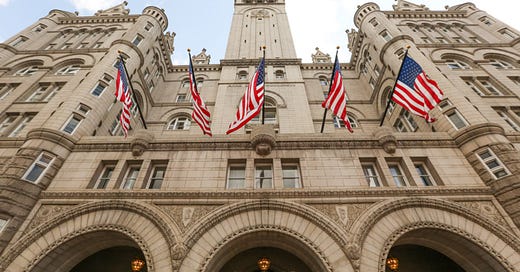



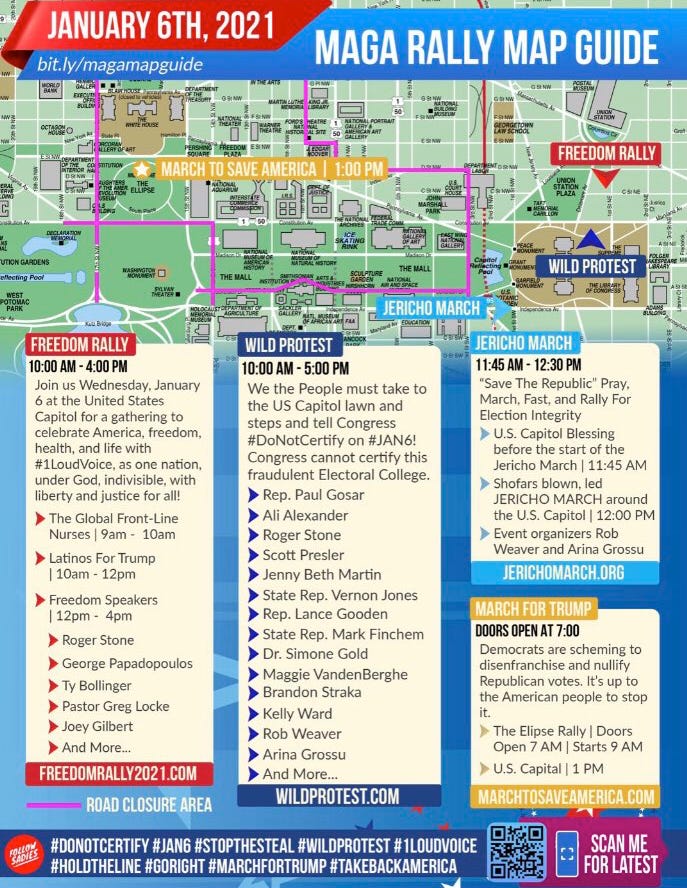
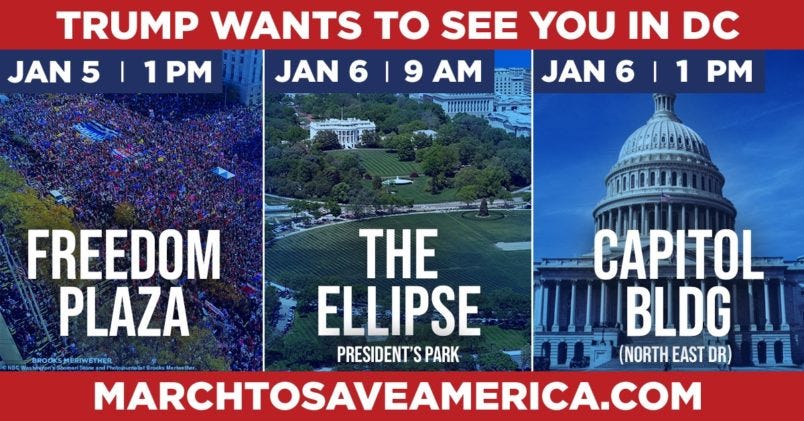
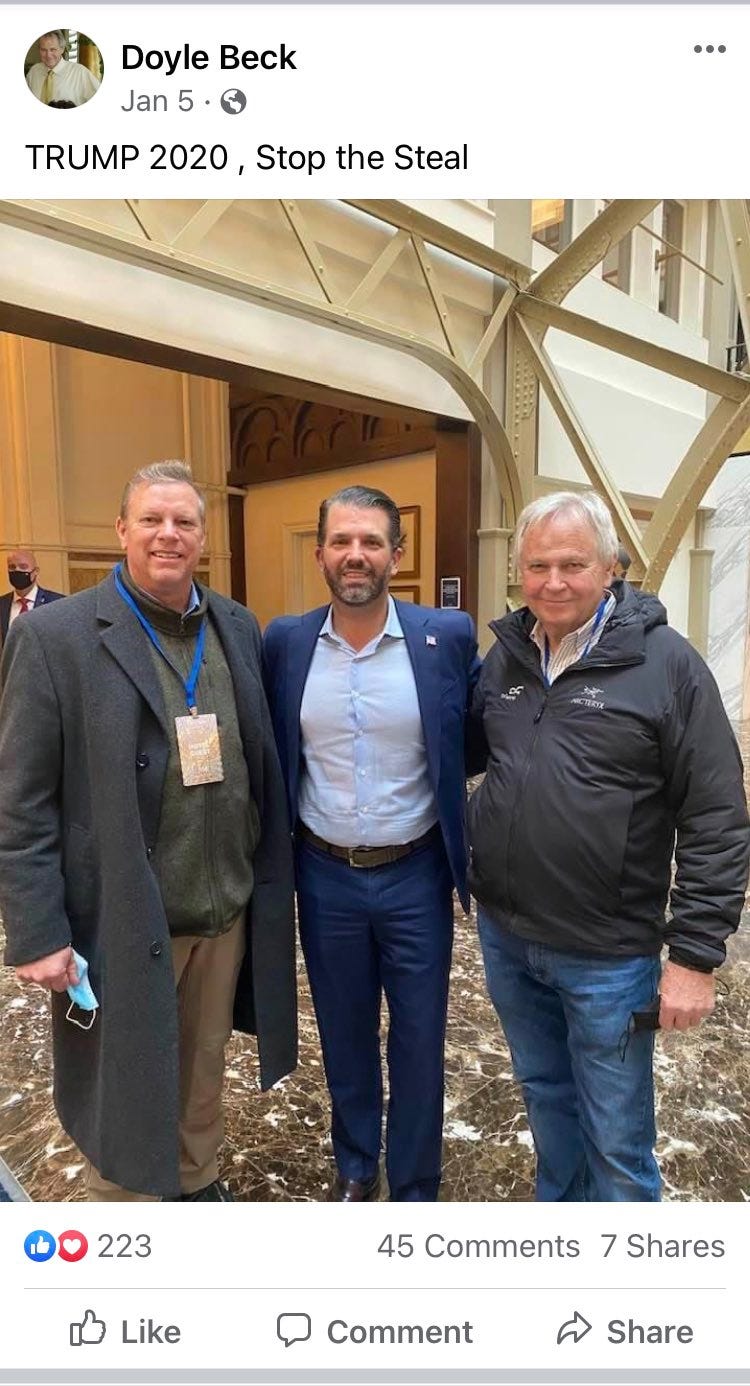
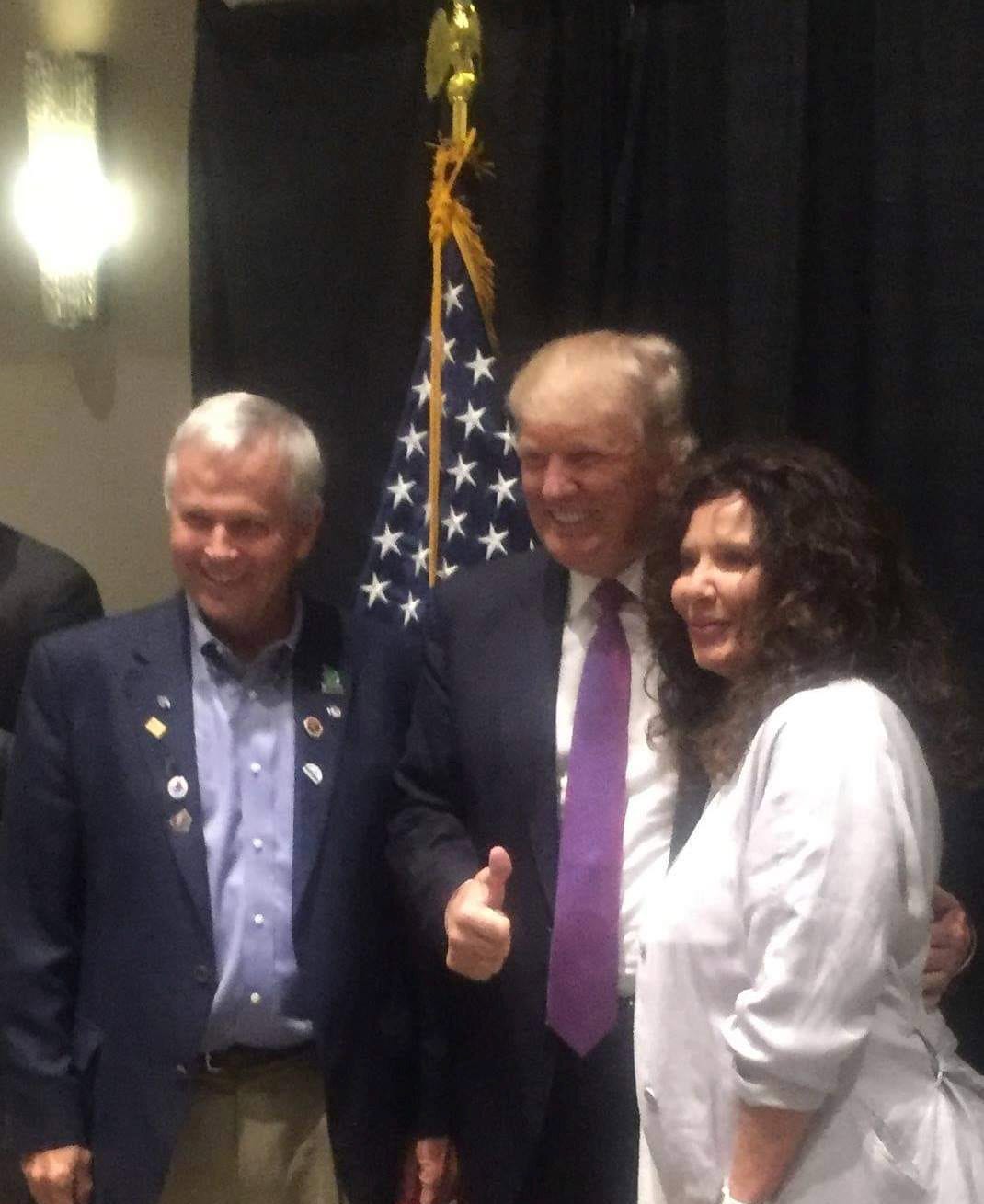
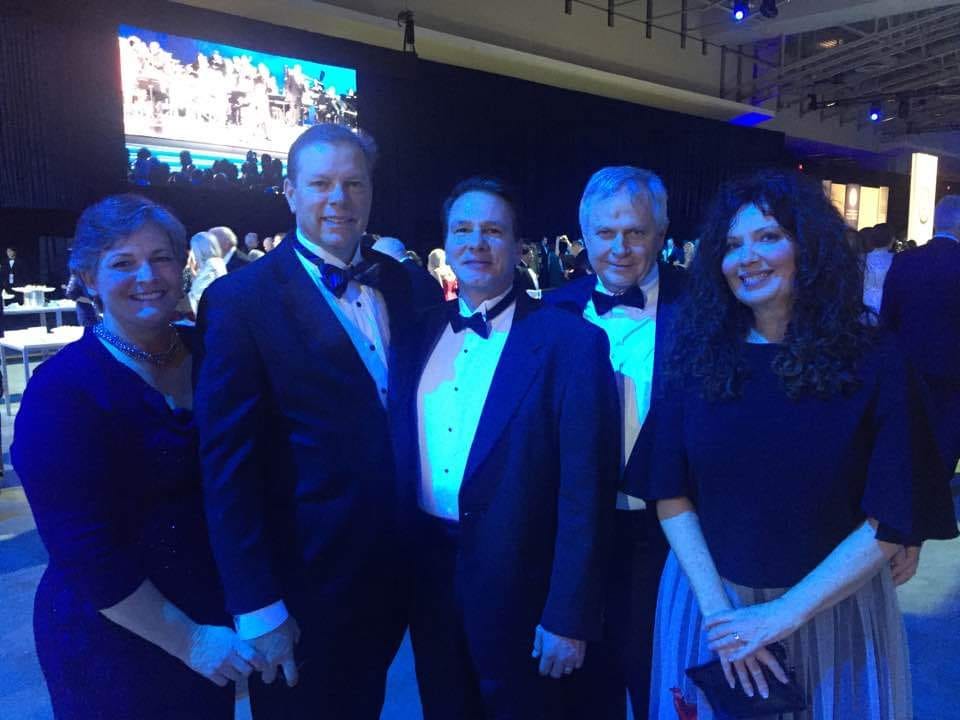


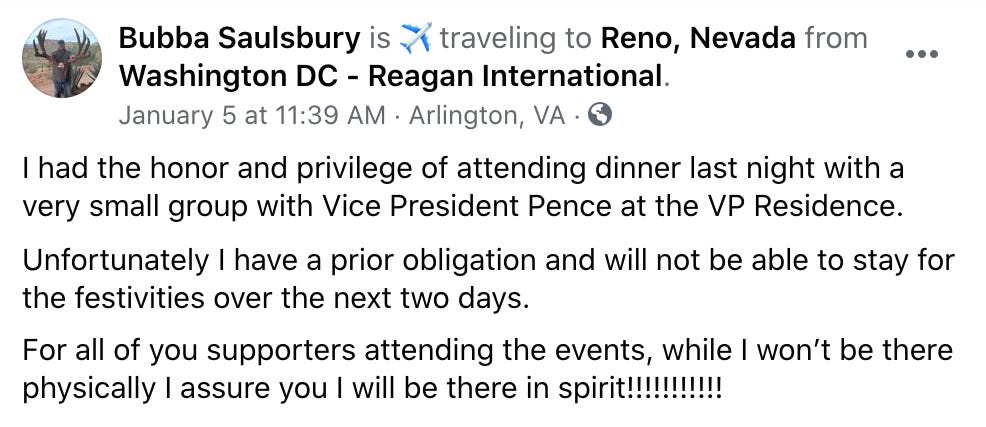

well done. Dont forget Chris Miller and McCarthy at DOD
As per usual, incredibly thorough, cogent analysis. Thank you for all your hard work.